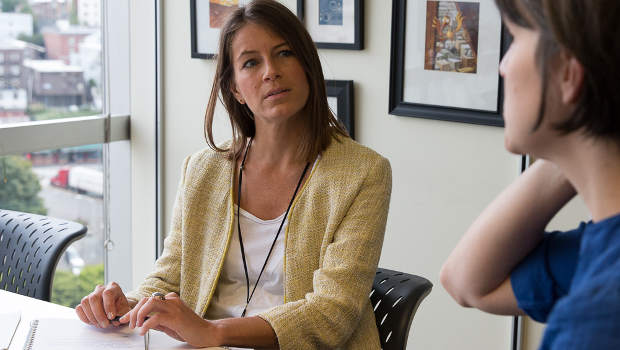SPARCC ignites change for equitable communities in 6 major cities

Emily Bourcier, MPH, MHA, is a principal investigator for CCHE’s evaluation work on SPARCC.
With $1.5 million from the Robert Wood Johnson Foundation, CCHE facilitates work to improve infrastructure and opportunities.
The Center for Health and Evaluation (CCHE) at Kaiser Permanente Washington Health Research Institute has long been interested in connections between racial disparities and community health. And now, thanks to a new collaboration with an urban planning firm and community leaders from several large American cities, they’re also helping communities learn how the built environment and climate change may add to that mix.
The project—called Strong, Prosperous and Resilient Communities Challenge (SPARCC)—is a massive, three-year, $90 million initiative supported by the Ford, Kresge, Robert Wood Johnson, and JPB Foundations, as well as The California Endowment. CCHE’s part is a $1.5 million contract to help evaluate the effort.
SPARCC is based on the premise that racial equity, health, and climate concerns all play a significant role in quality of life. To improve opportunities for low-income communities, these factors should be addressed concurrently.
The initiative is funding multidisciplinary teams—called "tables"—in Atlanta, Chicago, Denver, Los Angeles, Memphis, and the San Francisco Bay Area. Each table brings together local leaders from public, private, and non-profit sectors in such fields as health, community development, housing, financial services, and transportation. The teams will pursue projects that change the physical spaces in which people interact, including housing, transit, public areas, and other infrastructure. The tables will leverage local action such as new public infrastructure investments and policy changes, using SPARCC funding to change the way metropolitan regions, grow, invest, and build.
CCHE will partner with the urban planning firm Raimi & Associates to evaluate the initiative. CCHE’s Emily Bourcier, MPH, MHA, and Lisa Schafer, MPH, will serve as principal investigators for the evaluation.
"Raimi & Associates have experience in urban planning," explains Ms. Bourcier. "They look at health and the built environment, and climate change—and they have a solid background working with community groups."
SPARCC leaders invited Ms. Bourcier and her team to be involved at the beginning to help the funders and tables define their goals in ways they can measure. For example, "promote equity" is a sweeping aspirational statement, but what does it mean in practical terms? How do you define and measure progress in ways that accurately reflect the impact on residents of local communities?
Using a variety of "ways" is crucial. SPARCC will involve diverse communities, multiple interests, and financial and ecological constraints. No single measurement will be able to tell the whole story of SPARCC’s impact.
"It’s an ambitious, complex initiative. No one has ever tried to approach problems in this way," Ms. Bourcier says. Her team was selected to evaluate SPARCC in large part because of their expertise in developmental evaluation, a discipline in which data are gathered, analyzed, and used as a basis for decision-making while a project is still underway.
The approach has four aspects:
-
Understanding the efficacy of SPARCC while project activities are in progress.
-
Providing real-time feedback and lessons learned to the sites and funders so they can adjust approaches when appropriate.
-
Documenting and telling the story of how SPARCC’s contributions change outcomes.
-
Disseminating results and lessons learned to external audiences to stimulate further action.
SPARCC evaluation will draw on both quantitative and qualitative data. Ms. Bourcier stresses that the evaluation process must not overly burden regional table participants or community members. Data must accurately capture the impact of the work and collection must be seen as a valuable use of participant time.
Community engagement beyond the table members will be key to the success of the projects–not just for changing the built environment, but for actively promoting equity. "In communities facing inequities, residents and many community institutions are in survival mode. When people are under-resourced, overworked, or stressed, it can be challenging to ask them to think about long-term projects and priorities," Ms. Bourcier says. "We find it is important to create space for stakeholders and residents to speak about immediate needs and try to connect those immediate needs and concerns to the long-term possibilities of the initiative."
by Janet Hendrickson, MS